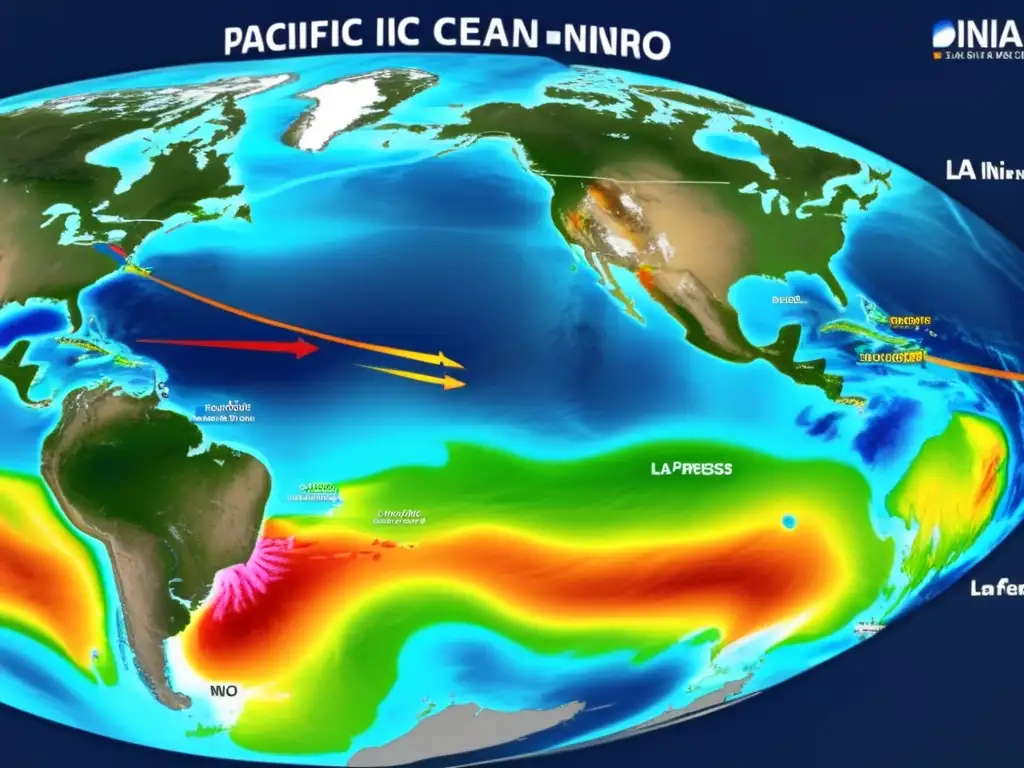Why Are Hurricanes Less Common In The South Atlantic?

Why Are Hurricanes Less Common in the South Atlantic?
Introduction
Hurricanes are one of the most destructive natural disasters that can occur in coastal communities. They are giant cyclones with extremely high winds and torrential rains that can cause major damage to infrastructure and properties. While some parts of the world are more prone to hurricanes, there are regions, like the South Atlantic, where they are much less common. In this article, we will explore the reasons why hurricanes are less likely to occur in the South Atlantic and what this means for people living in the region.
The Role of Ocean Temperatures

One of the primary reasons why hurricanes don't occur frequently in the South Atlantic is due to the cooler ocean temperatures found in the region. Hurricane formation requires warm waters of at least 80°F (26.5°C) to fuel their growth and intensity. The tropical waters of the Caribbean and Gulf of Mexico often reach these temperatures during hurricane season, which is typically from June through November. However, the waters in the South Atlantic are usually too cool to promote hurricane development, which is why there have only been a few recorded occurrences of hurricanes in the region.
The Importance of Sea Surface Temperature
Sea surface temperature plays a crucial role in hurricane formation and development. It is one of the key factors that determine where hurricanes form and how strong they become. When sea surface temperatures rise above 80°F (26.5°C), it creates the ideal conditions for intense hurricanes to form. As the warm water evaporates, it creates a moist and unstable atmosphere that fuels the hurricane's growth. This is why the majority of the world's strongest hurricanes form in the Atlantic, where sea surface temperatures are the highest.
The South Atlantic's Cooler Waters
The South Atlantic, on the other hand, experiences cooler sea surface temperatures, which makes it much less likely for hurricanes to form. The region has a consistent ocean temperature of around 70°F (21°C) year-round, which is much cooler than the required temperature for hurricane formation. While the occasional tropical storm may occur in the region, the cooler waters limit their growth and intensity.
Location on the Earth's Hemisphere

The location of the South Atlantic on the earth's hemisphere also plays a role in hurricane occurrence. Hurricanes typically form in the tropics, between the Tropic of Cancer and the Tropic of Capricorn. The South Atlantic lies primarily below the Tropic of Capricorn, which means that it is located too far south to experience the necessary conditions for hurricane formation.
The Earth's Rotation and the Coriolis Effect
Another factor determining where hurricanes form is the Earth's rotation and the Coriolis Effect. The Coriolis effect causes moving air and water to curve to the right in the Northern Hemisphere and to the left in the Southern Hemisphere. This causes hurricanes in the Northern Hemisphere to rotate counterclockwise while storms in the Southern Hemisphere rotate clockwise. Since the South Atlantic is located south of the equator, its storms and weather systems rotate in the opposite direction of hurricanes found in the Atlantic, Pacific, and Indian Oceans.
Other Factors That Limit Hurricane Formation

There are other factors that can limit hurricane formation in the South Atlantic, including wind shear and dry air. Wind shear occurs when winds at different altitudes travel at varying speeds or directions. High wind shear can disrupt a hurricane's development by tearing apart the structure of the storm. The South Atlantic experiences high wind shear levels, which can prevent the formation of intense tropical storms and hurricanes.
Dry Air and Dust
Dry air is another limiting factor in the South Atlantic since it can prevent the formation of thunderstorms, which are necessary for hurricanes to develop. The combination of high wind shear and dry air in the region makes hurricane formation very rare.
The presence of atmospheric dust can also affect hurricane activity. Dust from the Sahara Desert, for example, can travel thousands of miles across the Atlantic Ocean and suppress hurricane formation by creating a dry and stable environment that is unfavorable for hurricane development. While this phenomenon mainly affects the North Atlantic, it can also have an impact on the South Atlantic.
Frequently Asked Questions

-
Can hurricanes ever occur in the South Atlantic?
Yes, but it is very rare. The cooler ocean temperatures and other limiting factors make it difficult for hurricanes to form in the region.
-
Do the South Atlantic's limitations on hurricanes make it safer to live in than other regions?
While the South Atlantic may be less prone to hurricanes, it is still important to be prepared for other natural disasters like floods, tornadoes, and severe storms.
-
What other regions are most susceptible to hurricanes?
The Caribbean, Gulf of Mexico, and Eastern seaboard of the United States are some of the most hurricane-prone areas in the world.
-
Can the availability of technology and information help in hurricane preparation and safety?
Absolutely. With advanced warning systems, satellite imagery, and other tools, people can better prepare for and respond to hurricanes, whether they occur in the South Atlantic or other regions of the world.
-
How important is it to have a disaster plan in place in areas prone to hurricanes?
It is essential to have a comprehensive disaster plan in place in hurricane-prone areas. This includes knowing evacuation routes, securing your property, and having emergency supplies on hand.
Conclusion
The South Atlantic region is much less prone to hurricanes than other areas of the world due to its cooler ocean temperatures, location on the earth's hemisphere, wind shear levels, dry air, and atmospheric dust. However, it is important to remember that no region is entirely immune to natural disasters, and it is crucial to be prepared for any eventualities. By understanding the factors that limit hurricane formation in the South Atlantic, we can better appreciate the unique conditions of the region and be better prepared for any potential natural disasters.
Additional Resources

 The Economic Consequences Of Major Hurricanes
The Economic Consequences Of Major Hurricanes Hurricanes And Mental Health: The Psychological Impact
Hurricanes And Mental Health: The Psychological Impact El Niño And La Niña: Influences On Hurricane Activity
El Niño And La Niña: Influences On Hurricane ActivityIf you want to discover more articles similar to Why Are Hurricanes Less Common In The South Atlantic?, you can visit the Basic knowledge about hurricanes: category.
Leave a Reply

Articulos relacionados: